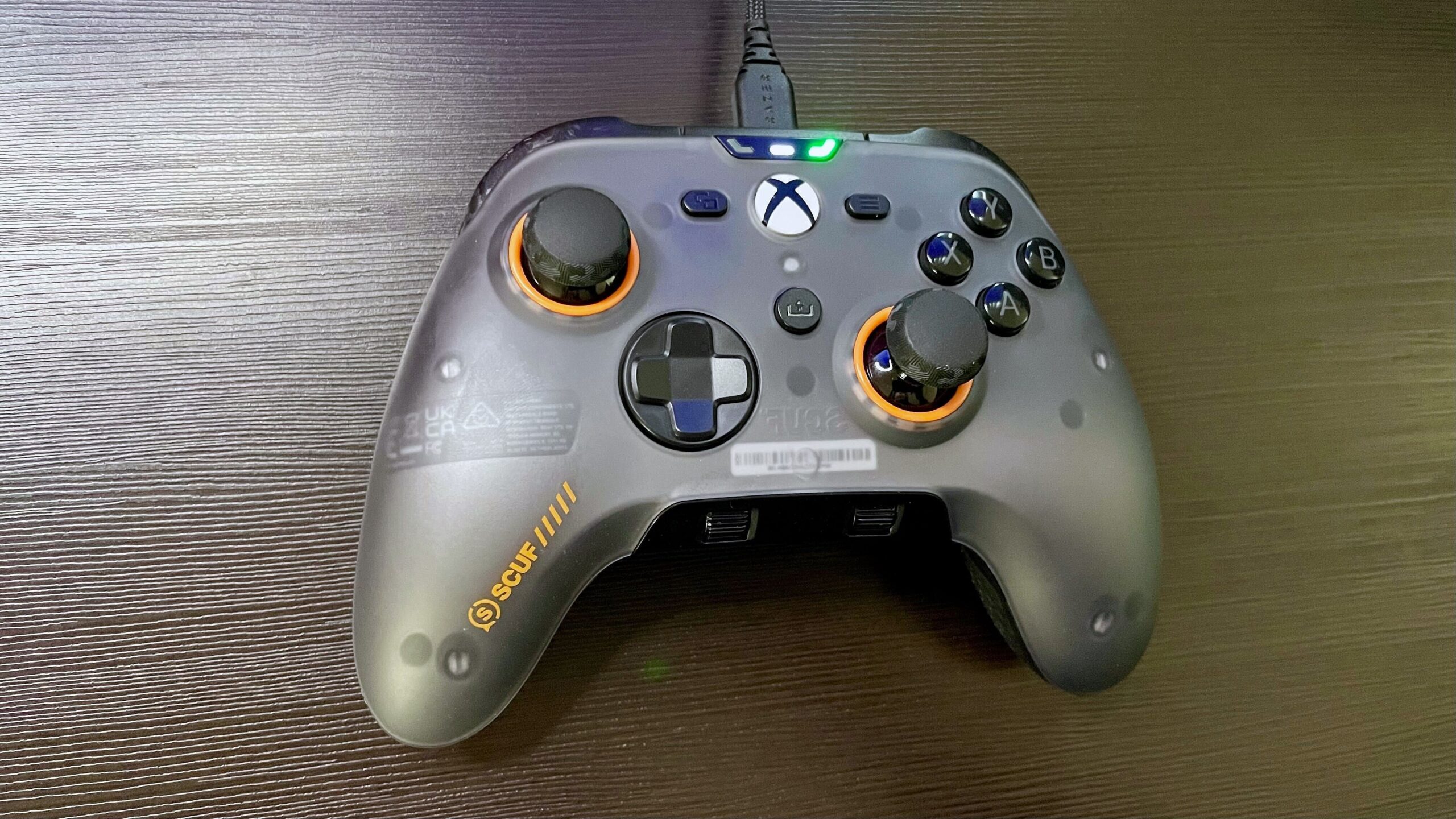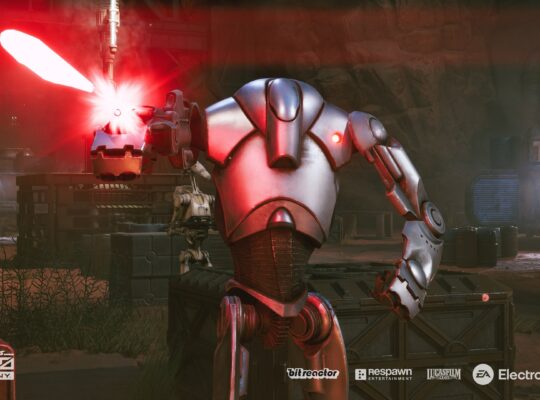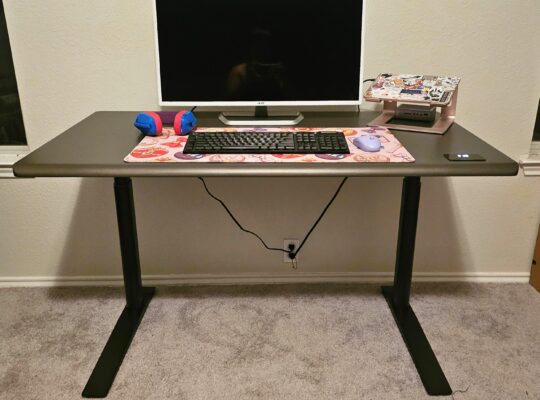
Pro-style controllers are a dime-a-dozen nowadays, but Scuf has pioneered the third-party gamepad that comes with extraneous features that are supposed to give a competitive edge. Things like programmable back buttons, swappable thumbsticks, hair trigger stops, and finely tuned analog control can genuinely make for a better gameplay experience, particularly for competitive scenarios where precision and split-second inputs matter. With so many options already available, where does that leave the new Scuf Valor Pro? It’s in the smaller details.
While there are a few new additions that aren’t necessarily game-changing, like onboard volume-chat wheels (and an upcoming 1000Hz polling rate for PC users), what matters is how it iterates on familiar features to make them feel better to use. It only comes wired, however, and that narrows its appeal, as it’s geared more towards competitive play – and $100 is a tough ask for a wired controller, but aside from a few quirks, it’s one of the better controllers for PC and Xbox.
Scuf Valor Pro – Design and Features
With this primarily being for Xbox, it takes on the same layout and similar ergonomics as the stock Xbox controller. Nearly across the board, however, every button has a better and more responsive tactile feel. The face buttons have a nice bounciness that makes them easier to tap rapidly, and the eight-way directional pad still has a distinct clickiness but it doesn’t have that stale crunch of the normal Xbox controller.
What’s arguably the biggest upgrade with the Valor Pro is the switch to magnetic Hall Effect analog sticks. As the concern over stick drift on traditional controllers leaves folks burned by defective parts and expensive options for replacements, Hall Effect sticks have been increasingly common in high-end third-party gamepads. They’re much more durable since the magnetic parts create less friction, and it also feels great from a performance standpoint here on the Valor Pro.
Another noteworthy addition is the unique onboard volume and chat balance control. On the bottom next to the 3.5mm audio jack are two scroll wheels – the left one handles in-game volume and the right one controls chat volume. Many wireless gaming headsets have a volume-chat mix dial of their own, so the one on the Valor Pro is strictly for devices plugged into the audio jack. This limits its use-case somewhat, but can make things convenient for those who go with a wired analog headset.
As for the more minute details, the left and right bumpers have a great mouse-like click to them, making them much easier to press with a light touch while providing good tactility. The triggers are smooth and consistent all the way through so it’s easier to apply a specific amount of pressure. On the inner side of RT and LT are trigger stops to put the hair trigger mechanism in place – it creates a much shorter throw distance so you can theoretically actuate and reset trigger inputs faster.
Back paddles are key to any good pro-style controller and the four programmable buttons are decent, but not exactly my favorite of the many controllers I’ved used in the past. The two main buttons, labeled P1 and P2, sit along the inner side of the controller’s grips where your middle fingers would typically rest. While their positioning and tactility are great, they’re a tad too stiff for my liking – at least I never accidentally pressed them even with a tight handle on the controller.
The back buttons labeled P3 and P4 are interesting in that they’re more like hunches that sit closer to the center of the controller’s rear. You can either flick them with the backside of your middle finger or press down on them directly, which makes them easier to use than P1 and P2 thanks to their soft, mouse-click feel. If you only need two back buttons and/or find the inner P3 and P4 buttons to get in the way, you can easily remove them by plucking them out from the notch on the inner side.
The rubberized texture that lines the handles creates a firm and comfortable grip – with all these extra features and pieces built for performance, having a solid grip on a controller that has a decent weight brings it all together.
Scuf Valor Pro – Customization and Software
With Scuf being under the Corsair umbrella, you’ll have to use the iCue software suite on PC to configure the controller manually. It’s one of my least favorite software suites among the major peripheral manufacturers, and as of now, iCue does not even recognize the Valor Pro. A near-future update will bring 1000 Hz polling rate to PC users – polling rate refers to the frequency at which the controller sends registered inputs to the device it’s plugged into. High polling rates are increasingly common in gaming mice and keyboards, and there’s a theoretical advantage to that, and while I find polling rates over 1000 Hz to bring a minimal to negligible benefit, I’d be curious to see how bringing a controller to a 1000 Hz standard could help. But until that update comes, I’ll be waiting.
A nonexistent customization app isn’t the end of the world since there just isn’t much to fiddle with on the Valor Pro. Mapping the back buttons is done easily on the controller itself – just hold down the profile button the back, press the back button and normal button you want to map together, and that’s it. You can even map d-pad directions and stick clicks in rare cases that would help more. The profile button swaps between three different settings (indicated by the LED color on the top right) so you don’t need to keep remapping things if you need specific setups for different games.
Like other Scuf controllers, you can lift the Valor Pro’s faceplate off since it’s held in place magnetically. Customizing a faceplate is cool and all, but this is how you swap out the thumbsticks by just pulling them out. The normal concave-style sticks are on by default, but I quite like the convex-style sticks, especially since there’s a taller one I can use as the right analog stick to create more room for precise motions (which helps aiming in a shooter).
Looking to upgrade your audio game?
Check out our roundup of the best gaming headsets for Xbox!
Scuf Valor Pro – Performance
Now, for the fun part – I played a good amount of Call of Duty: Black Ops 6 multiplayer, Avowed, Ninja Gaiden 2 Black, and Forza Motorsport to get a full picture of how it performs in various scenarios. And from hours of playing these games, the Valor Pro stacks up against some of my favorite third-party controllers in recent memory.
The first thing I did before jumping into Black Ops 6 was map the face buttons to the back buttons to make sure my right thumb never had to leave the stick. As I mentioned above, the P1 and P2 buttons are quite stiff, but that wasn’t too much of a problem when having jump and crouch set to them – being able to initiate a slide while constantly aiming felt great and the P2 button worked well for that. Reload and switching weapons often need to be done in heated moments so setting them to P3 and P4, and giving them a light flick, did the trick in intense firefights.
Call of Duty is the type of game that would benefit from hair triggers, and it’s the one area the Valor Pro falls short. I tend to avoid using hair triggers on account of the fact that I just don’t like how it feels, despite the potential benefit. But even more so with the Valor Pro, I was even less inclined to use them since they make the triggers stiff as a board. It takes far too much pressure to initiate the trigger, which defeats the purpose of a hair-trigger that’s supposed to be light and fast on the draw. And if anything, it hindered my ability to get the jump on my enemies. If this is a feature you rely on with high-end controllers, it’ll be a dealbreaker.
I quite enjoyed my time with Avowed using this controller simply because I can map jump to a back button (there’s surprisingly a lot of parkour in the game). The overall build and feel shined throughout a long session, which is something I can also say from playing through more of Ninja Gaiden 2 Black. It being an action game that requires lots of rapid pressing of the face buttons, the bounciness of A, B, X, and Y made the experience a bit more enjoyable and took some pressure off my right thumb. Ninja Gaiden also has a few button combos for special attacks, so using the back buttons to more easily press A + B or B + Y turned out to be a nice convenience.
Forza Motorsport proved the finesse of the triggers. The smooth and consistent throw of RT and LT let me feather the gas and brake with precision, more so than the stock Xbox controller. The triggers find a good balance between being firm and light, and manage to have no friction, stickiness, or unwanted resistance along the travel distance. So, while the hair triggers leave a lot to be desired, its normally set triggers have the edge over some of the best controllers on the market.














